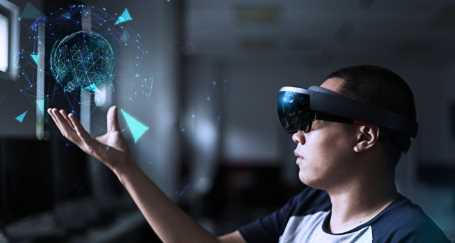In recent years, Augmented Reality (AR) and Virtual Reality (VR) have become increasingly popular technologies, particularly in the gaming and entertainment industries. Both AR and VR rely heavily on coding to function properly, and understanding how coding works for these technologies is essential for anyone interested in working in these industries.
Augmented Reality (AR) is a technology that overlays digital content onto the real world. AR is often used in mobile apps, allowing users to point their camera at an object and see digital information displayed on their phone screen. AR relies heavily on computer vision, which is the ability of a computer to understand and interpret visual information. The coding for AR involves developing algorithms that can recognize and track objects in real-time, allowing the digital content to be overlaid on top of the real world in a way that looks natural and seamless.
The coding for AR also involves developing user interfaces (UI) and user experience (UX) designs that make it easy for users to interact with the digital content. This involves creating intuitive gestures and controls that allow users to navigate and manipulate the digital content in a way that feels natural.
Virtual Reality (VR), on the other hand, is a technology that immerses users in a fully digital environment. VR typically involves the use of a headset and hand controllers to create a sense of presence within the digital world. The coding for VR involves creating algorithms that can track the user's movements and position in real-time, allowing the digital world to be rendered and updated in real-time to create a seamless and immersive experience.
The coding for VR also involves developing physics engines that can accurately simulate the physical properties of objects within the digital environment. This allows users to interact with the virtual world in a way that feels realistic and natural. The coding for VR also involves creating user interfaces and user experience designs that make it easy for users to navigate and interact with the digital environment.
Both AR and VR also rely heavily on 3D modeling and graphics programming. In order to create realistic and immersive experiences, developers must create detailed 3D models of objects, environments, and characters. These 3D models must then be rendered in real-time using graphics programming, which involves creating algorithms that can display the 3D models on the user's screen at a high frame rate.
One of the challenges of coding for AR and VR is the need to optimize performance. Both AR and VR require a significant amount of processing power to function properly, and developers must be careful to ensure that their code is optimized to run smoothly on a variety of devices. This often involves using techniques such as culling, which involves only rendering objects that are currently visible to the user, and LOD (Level of Detail), which involves reducing the level of detail in objects that are far away from the user to save processing power.
Conclusion
Coding is an essential component of both Augmented Reality (AR) and Virtual Reality (VR) technologies. The coding for AR involves developing algorithms that can recognize and track objects in real-time, creating intuitive user interfaces and user experience designs, and rendering digital content in a way that looks natural and seamless. The coding for VR involves creating algorithms that can track the user's movements and position in real-time, simulating the physical properties of objects within the digital environment, and creating realistic 3D models that can be rendered in real-time using graphics programming. As AR and VR continue to evolve and become more widespread, the demand for skilled developers who can code for these technologies will only continue to grow.




Leave Comment